
Monterrey: The Heart of Northern Mexico
Discover Monterrey: A blend of modernity and tradition, surrounded by stunning mountains and filled with rich culture, delicious cuisine, and outdoor adventures.
Monterrey, nestled in the Sierra Madre Oriental mountains, is a vibrant city known for its modernity, rich culture, and stunning natural landscapes. As the industrial hub of northern Mexico, Monterrey offers an intriguing mix of sleek skyscrapers and traditional Mexican charm. Explore the city's historic center, where you can visit the beautiful Macroplaza, one of the largest public squares in the world. Nearby, you’ll find the stunning Catedral Metropolitana and the fascinating Museum of Mexican History. Don't miss the chance to stroll along Santa Lucia Riverwalk, a picturesque canal lined with lush gardens and cafes. Monterrey is also a paradise for nature lovers. The nearby Parque Fundidora is a vast urban park that blends industrial heritage with green spaces. For a more adventurous experience, head to the Chipinque Ecological Park or the Huasteca Canyon, both offering breathtaking views and excellent hiking trails. Food enthusiasts will delight in Monterrey's culinary scene, which includes everything from street tacos to fine dining. Be sure to try the local specialty, cabrito (roast goat), and visit the Mercado del Norte for a taste of authentic regional flavors. Whether you're an art lover, an outdoor enthusiast, or a foodie, Monterrey has something to offer every traveler. Its warm and welcoming atmosphere makes it a must-visit destination in Mexico.
Local tips in Monterrey
- Visit during spring or fall to enjoy pleasant weather and outdoor activities.
- Use public transportation or ride-sharing services to navigate the city efficiently.
- Learn a few basic Spanish phrases; locals appreciate the effort.
- Stay hydrated and wear sunscreen, especially during outdoor excursions.
- Try to book tickets for museums and attractions online to avoid long queues.
Neighbourhoods in Monterrey
Monterrey: The Heart of Northern Mexico
Monterrey, nestled in the Sierra Madre Oriental mountains, is a vibrant city known for its modernity, rich culture, and stunning natural landscapes. As the industrial hub of northern Mexico, Monterrey offers an intriguing mix of sleek skyscrapers and traditional Mexican charm. Explore the city's historic center, where you can visit the beautiful Macroplaza, one of the largest public squares in the world. Nearby, you’ll find the stunning Catedral Metropolitana and the fascinating Museum of Mexican History. Don't miss the chance to stroll along Santa Lucia Riverwalk, a picturesque canal lined with lush gardens and cafes. Monterrey is also a paradise for nature lovers. The nearby Parque Fundidora is a vast urban park that blends industrial heritage with green spaces. For a more adventurous experience, head to the Chipinque Ecological Park or the Huasteca Canyon, both offering breathtaking views and excellent hiking trails. Food enthusiasts will delight in Monterrey's culinary scene, which includes everything from street tacos to fine dining. Be sure to try the local specialty, cabrito (roast goat), and visit the Mercado del Norte for a taste of authentic regional flavors. Whether you're an art lover, an outdoor enthusiast, or a foodie, Monterrey has something to offer every traveler. Its warm and welcoming atmosphere makes it a must-visit destination in Mexico.
When is the best time to go to Monterrey?
Iconic landmarks you can’t miss
Fundidora Park
Explore the beauty and culture of Fundidora Park, Monterrey’s premier destination for nature, history, and recreation.

Macroplaza
Explore the stunning Macroplaza in Monterrey, a vibrant urban oasis filled with history, culture, and unforgettable experiences.

Paseo Santa Lucía
Experience the beauty of Paseo Santa Lucía, a serene park in Monterrey featuring stunning landscapes, art installations, and tranquil waterways.

Mirador del obispado
Experience stunning panoramic views of Monterrey at Mirador del Obispado, a cultural gem nestled in the heart of Nuevo Leon.

Museo del Acero Horno 3
Discover the rich industrial heritage of Monterrey at Museo del Acero Horno 3, a captivating technology museum that celebrates steel production and innovation.
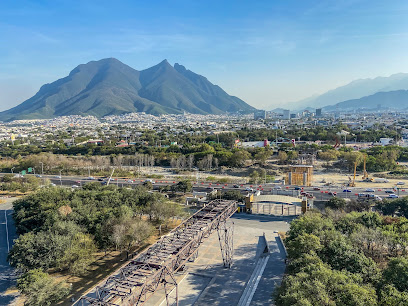
Chipinque A.B.P. Ecological Park
Experience the breathtaking beauty of Chipinque A.B.P. Ecological Park, a premier ecological destination for hiking and nature exploration in the Sierra Madre mountains.

Basílica de Nuestra Señora del Roble
Explore the stunning Basílica de Nuestra Señora del Roble, a captivating Catholic church in the heart of Monterrey, showcasing exquisite architecture and spiritual depth.

Cumbres de Monterrey National Park
Discover the breathtaking landscapes and diverse wildlife of Cumbres de Monterrey National Park, a haven for nature lovers and adventure seekers in Mexico.

Catedral Metropolitana de Nuestra Señora de Monterrey
Explore the stunning Catedral Metropolitana de Nuestra Señora de Monterrey, an architectural masterpiece and spiritual haven in the heart of Monterrey.

Cerro del Obispado
Discover the breathtaking views and rich history of Cerro del Obispado, a prime tourist attraction in Monterrey, Nuevo León.

Barrio Antiguo
Explore the vibrant streets of Barrio Antiguo, a historical landmark in Monterrey, where culture, cuisine, and craftsmanship come alive.

Arco de la Independencia
Discover the Arco de la Independencia in Monterrey, a stunning sculpture symbolizing Mexico's rich history and cultural heritage in a vibrant urban setting.

Palace Museum
Explore Monterrey's cultural heritage at the Palace Museum, where history comes alive through fascinating exhibits and engaging displays.
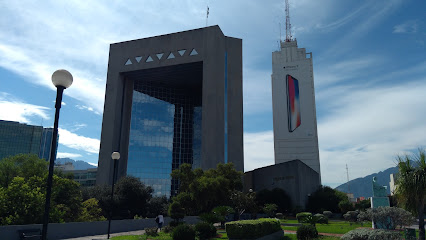
Paseo Santa Lucia
Discover the beauty of Paseo Santa Lucia, a serene riverwalk in Monterrey filled with lush landscapes, art, and local culture.

Paseo De La Mujer Mexicana
Discover the beauty and significance of women's contributions to Mexican culture at Paseo De La Mujer Mexicana in Monterrey.

Unmissable attractions to see
Macroplaza
Explore the vibrant Macroplaza in Monterrey, a cultural hub filled with museums, gardens, and architectural wonders, perfect for every traveler.

Paseo Santa Lucía
Discover the serene beauty of Paseo Santa Lucía, a stunning riverwalk in Monterrey, where nature and culture intertwine in perfect harmony.

Mexican History Museum
Discover the vibrant history of Mexico at the Mexican History Museum in Monterrey, where engaging exhibits bring the past to life.

Museo de Acero
Explore the fascinating history and innovative exhibits at Museo de Acero in Monterrey's stunning Fundidora Park.

Museo del Acero Horno 3
Discover the rich industrial heritage at Museo del Acero Horno 3, an immersive experience in Monterrey's steel production history.
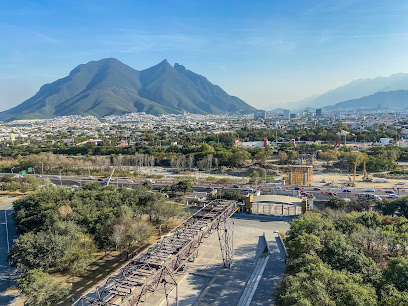
La Huasteca
Explore La Huasteca, a breathtaking national park in Nuevo Leon, offering adventure sports, stunning landscapes, and unforgettable outdoor experiences.
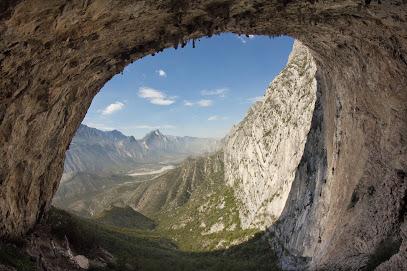
Museum of Contemporary Art of Monterrey
Discover the essence of modern creativity at the Museum of Contemporary Art of Monterrey, where art transcends boundaries and inspires every visitor.
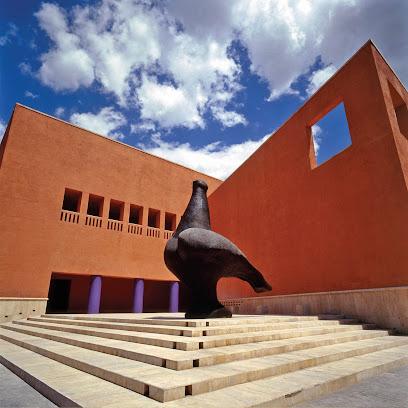
Cascada Cola de Caballo By Tours in Monterrey
Explore the breathtaking Cascada Cola de Caballo, a stunning waterfall in Santiago, Nuevo León, perfect for hiking, picnics, and nature photography.

Cola de Caballo Centro Recreativo
Discover the breathtaking beauty of Cola de Caballo in Santiago, Nuevo León - a perfect blend of adventure and nature.

Rufino Tamayo Park
Discover the lush beauty and cultural richness of Rufino Tamayo Park, an urban oasis in San Pedro Garza García perfect for relaxation and recreation.

Basílica de Nuestra Señora del Roble
Explore the spiritual heart of Monterrey at the Basilica de Nuestra Señora del Roble, a stunning architectural marvel and cultural gem.

Grutas De García
Discover the enchanting beauty of Grutas de García, Mexico's breathtaking limestone caves, and stunning mountain vistas, perfect for every adventure seeker.

Cumbres de Monterrey National Park
Experience breathtaking landscapes and outdoor adventures at Cumbres de Monterrey National Park, a natural gem near Monterrey, Nuevo Leon, Mexico.

Museo del Noreste
Discover the heart of Northern Mexico's history and culture at Museo del Noreste in Monterrey, where engaging exhibits and rich stories await every visitor.

Catedral Metropolitana de Nuestra Señora de Monterrey
Explore the majestic Catedral Metropolitana de Nuestra Señora de Monterrey, a neo-Gothic masterpiece and spiritual haven in the heart of Monterrey, Mexico.

Essential places to dine
Los Frijoles Merendero y Cantina
Experience authentic Mexican flavors at Los Frijoles Merendero y Cantina - where tradition meets deliciousness in Monterrey.

El Rey del Cabrito
Discover El Rey del Cabrito: A premier destination for authentic Mexican cuisine in Monterrey specializing in delicious cabrito dishes.

Restaurant Palax
Discover the rich flavors of American and Mexican cuisine at Restaurant Palax in Monterrey's bustling Centro district.
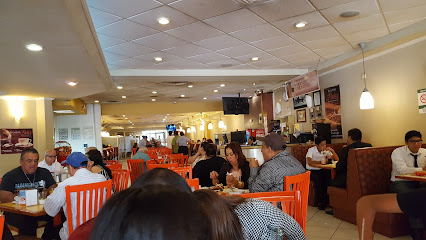
El Gaucho de Monterrey
Experience authentic Argentinian flavors at El Gaucho de Monterrey—where every meal is a celebration of culinary tradition.

Ryoshi Monterrey
Experience authentic Japanese cuisine at Ryoshi Monterrey - where every dish tells a story of tradition and flavor.

Mochomos
Experience the best of Mexican cuisine at Mochomos in Monterrey, where exquisite flavors meet elegant ambiance for an unforgettable dining experience.

Me Muero de Hambre
Discover authentic Mexican flavors at Me Muero de Hambre in Monterrey - where every meal tells a story.

Restaurante San Carlos Morones Prieto
Discover the essence of Mexican cuisine at Restaurante San Carlos Morones Prieto - where every meal tells a story.

Tenerias
Discover Tenerias in Monterrey - where vibrant Mexican flavors meet a lively atmosphere for an unforgettable dining experience.

Al Restaurant, Sa De Cv
Discover authentic Mexican flavors at Al Restaurant in Monterrey - where every meal is a celebration of culinary traditions.

La Torrada
Discover La Torrada: An exquisite steakhouse and bar experience in San Pedro Garza García offering gourmet cuisine and vibrant ambiance.

Prime Steak House Monterrey
Experience exquisite dining at Prime Steak House Monterrey with premium steaks and refined atmosphere in Nuevo Leon's culinary hotspot.

MIRADOR RESTAURANTE
Discover the rich flavors of traditional Mexican cuisine at Mirador Restaurante in Monterrey with stunning views and exceptional service.

Lázaro & Diego
Experience authentic Mexican breakfasts at Lázaro & Diego in Monterrey – where taste meets tradition in a welcoming setting.

Kød Rustic Deli
Discover Kød Rustic Deli in Monterrey: A delightful blend of traditional flavors and modern cuisine awaits you.

Markets, malls and hidden boutiques
Galerías Monterrey
Discover the ultimate shopping experience at Galerías Monterrey, featuring top brands, diverse dining options, and family-friendly entertainment.

Plaza Nuevo Sur
Discover the vibrant shopping experience at Plaza Nuevo Sur in Monterrey, where culture, fashion, and dining come together in a lively atmosphere.

Fashion Drive
Explore Fashion Drive, San Pedro Garza García's ultimate shopping mall with diverse stores, dining, and entertainment options for every visitor.

El Nuevo Mundo Department Store
Discover the vibrant El Nuevo Mundo Department Store in Monterrey, a shopping paradise with a diverse range of products and local culture.

Esfera City Mty
Discover an unparalleled shopping experience at Esfera City Mty, Monterrey's premier mall featuring diverse retail, dining, and entertainment options for all.

Plaza Cumbres
Explore Plaza Cumbres in Monterrey: a vibrant shopping mall offering diverse retail and dining experiences in a family-friendly atmosphere.

Paseo San Pedro
Discover Paseo San Pedro, an upscale shopping mall in San Pedro Garza García, where luxury shopping meets exquisite dining and vibrant entertainment.

Pulga Río
Discover the vibrant shopping scene at Pulga Río in Monterrey, featuring a variety of stores and delightful dining options for every taste.
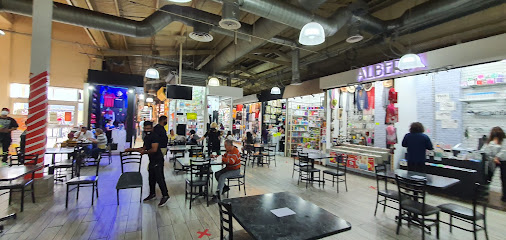
Camasha Valle Oriente
Explore the vibrant shopping scene at Camasha Valle Oriente, Monterrey's premier destination for retail therapy and cultural experiences.
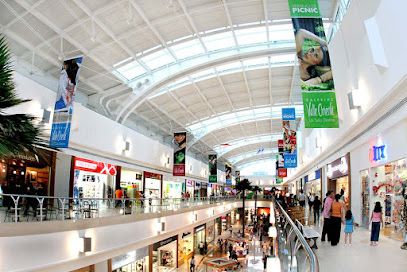
Avanta Gardens
Discover Avanta Gardens: The Ultimate Shopping and Dining Experience in San Pedro Garza García, Nuevo León.

Plaza México
Explore Plaza México in Monterrey, a vibrant shopping mall offering diverse stores, delicious dining, and entertainment for all ages in one lively destination.
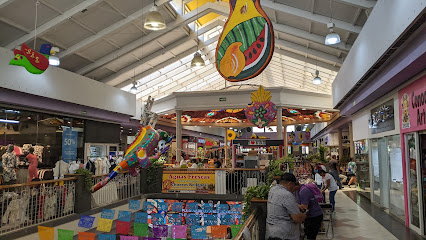
Plaza Morelos Monterrey
Discover the vibrant shopping experience at Plaza Morelos in Monterrey, where fashion, dining, and entertainment come together in one lively destination.

Lucy Franco
Discover the elegance of bridal fashion at Lucy Franco, Monterrey's premier bridal boutique offering personalized services and exquisite gowns.

The king shop
Discover stylish footwear at The King Shop in Monterrey, a premier destination for shoe lovers offering a diverse range of trendy and elegant options.

Burner Shop
Explore the vibrant fashion scene at Burner Shop in Monterrey, offering trendy clothing and accessories that capture the city's essence.

Essential bars & hidden hideouts
The Horde Bar Arcade
Discover the vibrant fusion of grilled delights and retro gaming at The Horde Bar Arcade in Monterrey, a must-visit for food and game lovers alike.

Sierra Madre Brewing Co.
Experience the vibrant blend of craft beer and delicious cuisine at Sierra Madre Brewing Co. in Monterrey's historic Barrio Antiguo.

Nandas 78 Bar Barrio Antiguo
Discover the vibrant nightlife of Monterrey at Nandas 78 Bar, a charming venue in the historic Barrio Antiguo offering a diverse drink menu and lively atmosphere.

Nueva Luna
Discover the vibrant culinary scene of Monterrey at Nueva Luna, where grilled delights and a lively atmosphere await you.

Nandas 78 Bar
Experience the vibrant nightlife of Monterrey at Nandas 78 Bar, where signature cocktails and lively ambiance await.

TOPAZdeluxe
Discover the vibrant nightlife of Monterrey at TOPAZdeluxe, where cocktails, music, and an electric atmosphere await.
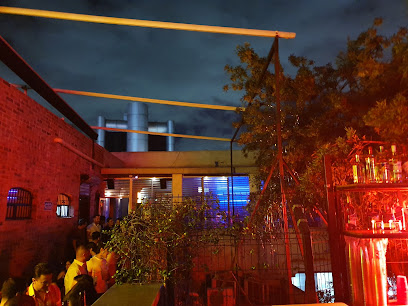
Wateke Bar
Discover the vibrant flavors and inclusive atmosphere at Wateke Bar, Monterrey's premier grill and gay bar destination.
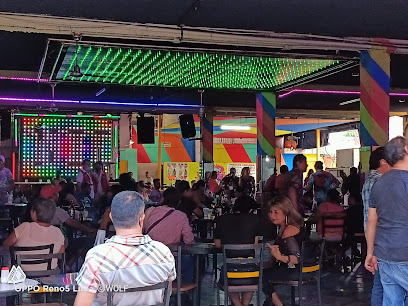
McMullen's
Discover the heart of Monterrey's nightlife at McMullen's, a lively live music bar brimming with local flavor and unforgettable performances.

Morrison Bar
Discover the lively atmosphere of Morrison Bar in Monterrey, where vibrant nightlife meets an extensive drink selection for an unforgettable experience.

Zanchos
Discover the essence of traditional Mexican cuisine at Zanchos, Monterrey's premier grill restaurant, blending vibrant flavors with a lively atmosphere.

Major Tom San Pedro
Discover the lively atmosphere of Major Tom San Pedro, a must-visit bar and grill in Monterrey, offering delicious food and refreshing drinks for all.

La Taberna - House of Brews
Discover Monterrey's vibrant craft beer scene at La Taberna - House of Brews, where local flavors and a lively atmosphere await.

MAVERICK MTY
Discover MAVERICK MTY, the ultimate bar and grill in San Pedro Garza García, offering delicious food and a lively nightlife experience.

Saufenhaus Pub Monterrey
Discover the flavors of Monterrey at Saufenhaus Pub, where grilled delights meet a lively pub atmosphere in the heart of the city.

The Escoces
Experience the flavors of Monterrey at The Escoces, a lively grill restaurant in the historic Barrio Antiguo, perfect for food lovers and night owls.

Local Phrases
-
- HelloHola
[oh-lah] - GoodbyeAdiós
[ah-dee-ohs] - YesSí
[see] - NoNo
[noh] - Please/You're welcomePor favor/De nada
[por fah-vor/de nah-dah] - Thank youGracias
[grah-see-as] - Excuse me/SorryDisculpe/Perdón
[dee-skool-peh/per-dohn] - How are you?¿Cómo estás?
[koh-moh ehs-tahs] - Fine. And you?Bien. ¿Y tú?
[byen. ee too] - Do you speak English?¿Hablas inglés?
[ah-blahs een-glays] - I don't understandNo entiendo
[noh ehn-tee-ehn-doh]
- HelloHola
-
- I'd like to see the menu, pleaseMe gustaría ver el menú, por favor
[meh goos-tah-ree-ah behr ehl meh-noo, poor fah-vor] - I don't eat meatNo como carne
[noh koh-moh kahr-neh] - Cheers!¡Salud!
[sah-lood] - I would like to pay, pleaseMe gustaría pagar, por favor
[meh goos-tah-ree-ah pah-gahr, poor fah-vor]
- I'd like to see the menu, pleaseMe gustaría ver el menú, por favor
-
- Help!¡Ayuda!
[ah-yoo-dah] - Go away!¡Vete!
[veh-teh] - Call the Police!¡Llama a la policía!
[yah-mah ah lah poh-lee-see-ah] - Call a doctor!¡Llama a un doctor!
[yah-mah ah oon dohk-tohr] - I'm lostEstoy perdido
[ehs-toy pehr-dee-doh] - I'm illEstoy enfermo
[ehs-toy ehn-fehr-moh]
- Help!¡Ayuda!
-
- I'd like to buy...Me gustaría comprar...
[meh goos-tah-ree-ah kohm-prahr...] - I'm just lookingSólo estoy mirando
[soh-loh ehs-toy mee-rahn-doh] - How much is it?¿Cuánto cuesta?
[kwan-toh kwehs-tah] - That's too expensiveEso es demasiado caro
[eh-soh ehs deh-mah-see-ah-doh kah-ro] - Can you lower the price?¿Puedes bajar el precio?
[pweh-dehs bah-hahr ehl pree-syoh]
- I'd like to buy...Me gustaría comprar...
-
- What time is it?¿Qué hora es?
[keh oh-rah ehs] - It's one o'clockEs la una
[ehs lah oo-nah] - Half past (10)Media (10)
[meh-dee-ah (dies)] - MorningMañana
[mah-nyah-nah] - AfternoonTarde
[tahr-deh] - EveningNoche
[noh-cheh] - YesterdayAyer
[ah-yehr] - TodayHoy
[oy] - TomorrowMañana
[mah-nyah-nah] - 1Uno
[oo-noh] - 2Dos
[dohs] - 3Tres
[trehs] - 4Cuatro
[kwah-troh] - 5Cinco
[seen-koh] - 6Seis
[says] - 7Siete
[syeh-teh] - 8Ocho
[oh-choh] - 9Nueve
[nweh-veh] - 10Diez
[dyes]
- What time is it?¿Qué hora es?
-
- Where's a/the...?¿Dónde está...?
[dohn-deh ehs-tah] - What's the address?¿Cuál es la dirección?
[kwal ehs lah dee-rehk-syon] - Can you show me (on the map)?¿Puedes mostrarme (en el mapa)?
[pweh-dehs mohs-trar-meh (ehn ehl mah-pah)] - When's the next (bus)?¿Cuándo es el próximo (autobús)?
[kwan-doh ehs ehl prohk-see-moh (ow-toh-boos)] - A ticket (to ....)Un boleto (a ...)
[oon boh-leh-toh (ah ...)]
- Where's a/the...?¿Dónde está...?
History of Monterrey
-
Monterrey was officially founded on September 20, 1596, by Diego de Montemayor. The city was originally named Ciudad Metropolitana de Nuestra Señora de Monterrey, in honor of the Viceroy of New Spain, Gaspar de Zúñiga y Acevedo, Count of Monterrey. The initial settlement faced many challenges, including conflicts with indigenous groups and scarce resources, but it ultimately flourished due to its strategic location.
-
In the late 19th century, Monterrey began to transform into an industrial powerhouse. The establishment of Fundidora de Fierro y Acero de Monterrey in 1900 marked the beginning of the city's industrial era. The steel mill, along with other industries like breweries and glass factories, played a crucial role in the economic development of Monterrey, earning it the nickname 'The Sultan of the North.'
-
Monterrey played a significant role during the Mexican Revolution (1910-1920). The city was a strategic location for both revolutionary and federal forces. In 1913, it was the site of the Battle of Monterrey, where revolutionary forces led by Venustiano Carranza's Constitutionalists clashed with the federal army. The city's industrial base also provided crucial supplies and logistical support to revolutionary forces.
-
One of the most influential educational institutions in Latin America, the Monterrey Institute of Technology and Higher Education (ITESM or Tec de Monterrey), was founded in 1943 by Eugenio Garza Sada. The institution was established to develop highly skilled professionals to support the growing industrial sector in Monterrey and has since become a leading university known for its innovation and academic excellence.
-
The latter half of the 20th century saw Monterrey undergo significant economic growth and modernization. The city's industrial base expanded, attracting multinational corporations and fostering economic diversification. The development of infrastructure, including highways, airports, and modern buildings, transformed Monterrey into a vibrant, cosmopolitan city, making it one of the most important economic hubs in Mexico.
-
Monterrey is rich in cultural heritage, reflected in its numerous museums, art galleries, and cultural festivals. The Museo de Arte Contemporáneo de Monterrey (MARCO) is one of the most prominent cultural institutions in the city. Monterrey also hosts several annual festivals, such as the Monterrey International Film Festival and the Festival Internacional de Santa Lucía, celebrating the city's artistic and cultural diversity.
Monterrey Essentials
-
Monterrey is served by General Mariano Escobedo International Airport (MTY), located about 24 kilometers from the city center. The airport has direct flights from major cities in North America and some international destinations. From the airport, you can take a taxi, ride-sharing service, or rent a car to reach the city. Buses and shuttles are also available for transportation to various parts of Monterrey.
-
Monterrey has a well-developed public transportation system, including buses, a metro system, and taxis. The Metrorrey metro system has three lines that connect different parts of the city, making it a convenient option for getting around. Taxis and ride-sharing services like Uber are widely available. If you prefer to drive, car rental services are also an option. Walking and biking are feasible in some neighborhoods, but be cautious of traffic.
-
The official currency in Monterrey is the Mexican Peso (MXN). Credit and debit cards are widely accepted in hotels, restaurants, and shops. ATMs are plentiful and can be found in banks, shopping centers, and convenience stores. It is advisable to carry some cash for smaller establishments, street vendors, and tips.
-
Monterrey is generally a safe city, but it is important to take standard precautions. Avoid walking alone at night in unfamiliar areas and be cautious in crowded places. Areas such as the downtown historical center and Santa Catarina have higher crime rates, so it is best to stay vigilant. Always use official taxis or ride-sharing services and avoid displaying valuables in public.
-
In case of emergency, dial 911 for immediate assistance. Monterrey has several hospitals and medical facilities, including Hospital San José and Hospital Zambrano Hellion. It is recommended to have travel insurance that covers medical emergencies. Pharmacies are available throughout the city for minor health issues and over-the-counter medications.
-
Fashion: Do dress casually, but avoid overly revealing clothing. Monterrey is a modern city, but modesty is appreciated. Religion: Do respect local customs, especially when visiting churches. Removing hats and speaking softly are good practices. Public Transport: Do use the metro and buses for an authentic experience. Don't eat or drink on public transport. Greetings: Do greet people with a handshake. A friendly 'Hola' is always appreciated. Eating & Drinking: Do try local dishes like cabrito and machaca. Don't refuse food or drink offered by locals, as it is considered impolite.
-
To experience Monterrey like a local, visit the Barrio Antiguo for its vibrant nightlife and historic architecture. Enjoy a hike at Chipinque or explore the caves at Grutas de García. For shopping, head to Fundidora Park where you can find local crafts and souvenirs. Engage with locals at the Mercado Juárez and try authentic street food.
Trending Landmark in Monterrey
-
Fundidora Park
-
Macroplaza
-
Paseo Santa Lucía
-
Mirador del obispado
-
Museo del Acero Horno 3
-
Chipinque A.B.P. Ecological Park
-
Basílica de Nuestra Señora del Roble
-
Cumbres de Monterrey National Park
-
Catedral Metropolitana de Nuestra Señora de Monterrey
-
Cerro del Obispado
-
Barrio Antiguo
-
Arco de la Independencia
-
Palace Museum
-
Paseo Santa Lucia
-
Paseo De La Mujer Mexicana
Nearby Cities to Monterrey
-
Things To Do in McAllen
-
Things To Do in Laredo
-
Things To Do in Matamoros
-
Things To Do in Brownsville
-
Things To Do in South Padre Island
-
Things To Do in Ixtapa-Zihuatanejo
-
Things To Do in Corpus Christi
-
Things To Do in Port Aransas
-
Things To Do in New Braunfels
-
Things To Do in Guanajuato
-
Things To Do in Fredericksburg
-
Things To Do in San Miguel de Allende
-
Things To Do in Queretaro
-
Things To Do in Austin
-
Things To Do in Sugar Land
















